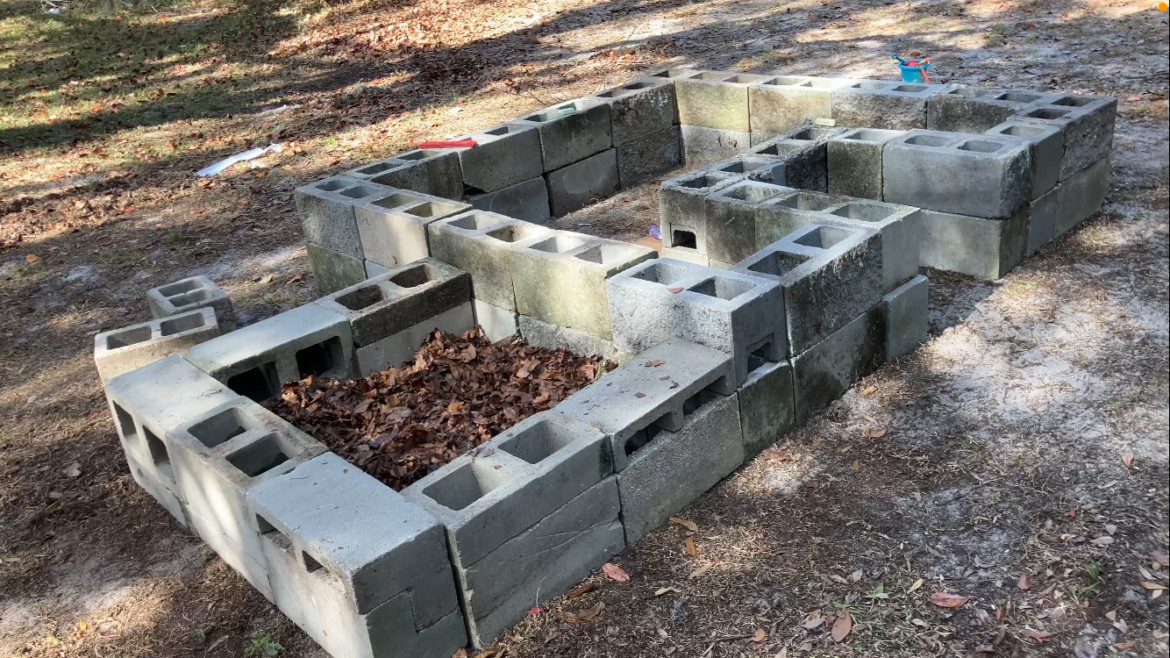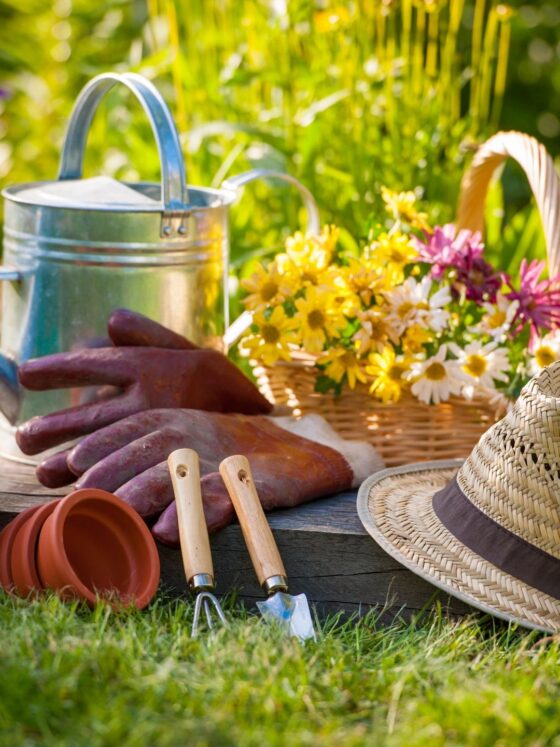How I Built a Cinder Block Raised Bed Garden Using Backyard Materials
Looking to start a garden but want a project that’s simple, sustainable, and budget-friendly? Let me walk you through how I built a cinder block raised bed garden using materials from my backyard. This project is not only easy to do but also environmentally friendly, as it repurposes natural waste like branches, sticks, and leaves.

Why Choose a Cinder Block Raised Bed?
Raised beds are an excellent way to grow vegetables, herbs, and flowers, especially if you have poor soil or limited space. Cinder blocks are a great choice because they’re sturdy, durable, and readily available. They also double as planters for smaller plants—the holes in the blocks can be filled with soil and used to grow herbs or flowers.
Materials Needed
Here’s what I used to create my raised bed:
- Cinder blocks (enough to form the perimeter of your bed)
- Branches, sticks, and leaves from my backyard
- Garden soil or compost
- Gardening tools (shovel, rake, etc.)
Step-by-Step Guide to Building Your Raised Bed
1. Choose the Perfect Location
Select a sunny spot in your yard that gets at least 6-8 hours of sunlight daily. Clear the area of weeds and level the ground.
2. Lay Out the Cinder Blocks
Arrange the cinder blocks in a rectangle or square shape, depending on the size of your garden. Make sure the blocks are level to create a stable structure. You can also stack the blocks for extra height if needed.
3. Add Natural Waste Layers
One of the unique things I did was to use branches, sticks, and leaves from my backyard to create a base layer inside the bed. This not only helps with drainage but also mimics a method called hugelkultur, which improves soil quality over time as the organic matter breaks down.
4. Fill with Soil
Once your natural materials are in place, cover them with a mix of garden soil and compost. Fill the bed to the top of the cinder blocks, ensuring the soil is evenly distributed.
5. Plant Your Garden
Now comes the fun part! Plant your favorite vegetables, herbs, or flowers. Use the holes in the cinder blocks for smaller plants like basil, marigolds, or strawberries.
6. Water and Maintain
Water your plants thoroughly after planting and continue to monitor the moisture levels. Raised beds can dry out faster than in-ground gardens, so consistent watering is key.
Benefits of Using Backyard Materials
By incorporating branches, sticks, and leaves, I not only saved money but also helped my garden in several ways:
- Improved Drainage: The base layer prevents water from pooling at the bottom of the bed.
- Nutrient-Rich Soil: As the organic matter decomposes, it enriches the soil with nutrients.
- Eco-Friendly: Repurposing natural waste reduces landfill contributions and promotes sustainability.
Final Thoughts
Creating a cinder block raised bed garden was a rewarding project that combined functionality with sustainability. By using materials from my own backyard, I saved money, reduced waste, and set up a garden that will thrive for years to come.
If you’re inspired to try this project, let me know in the comments or share your own gardening tips. Don’t forget to share this post with fellow gardening enthusiasts—let’s grow something amazing together!



